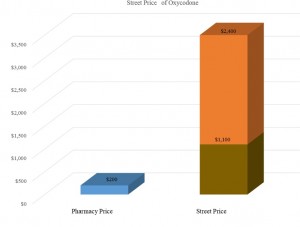By almost any measure, the U.S. health care system remains dysfunctional. If you apply some of its common practices to other industries, they sound ridiculous. Consider this hypothetical thought experiment. Suppose you made an appointment at a local dog kennel for them to keep your dog, Bowser, while you were on vacation. You asked if they could bathe and groom Bowser just prior to your return. As is standard practice, you probably had to sign a consent form agreeing to pay for the boarding and any additional fees insured. Maybe the grooming fees weren’t guaranteed ahead of time, but you were assured they were nominal and normal for the services. Among the forms you were asked to sign, there was some fine print that said should your dog become ill, the services of a veterinarian would be arranged at your expense.
During his stay Bowser seemed lethargic and a little anxious — and he wasn’t very interested in his food. Maybe you assumed this is normal for a dog left at a kennel for a week. But Doggie Spa & Canine Resort cannot take any chances. It called in a pet behavioral therapist to assess Bowser’s condition. The doggie shrink brought along a colleague for a second opinion. The pet behavior therapist recommended Bowser be walked twice a day to lift his spirits. However, another veterinarian — an orthopedist — had to assess Bowser’s gait to make sure he was healthy enough to be walked. A pet nutritionist analyzed Bowser’s diet and assessed his food intake. She sent a stool sample to a lab for analysis of food absorption. She ultimately decided that spoon-feeding Bowser might encourage him to eat.
Upon your return you pick up your dog expecting to pay for boarding, bathing and grooming. You know Bowser was well-taken care of, but the fees were much higher than expected. Within days of your return, itemized bills from vendors begin to arrive. The person who bathed your dog sent a separate bill from Doggie Spa’s bathing fee. A different bill from the person who applied the shampoo is in your stack of mail. Yet another bill arrives from the groomer. You discover the groomer also brought along an assistant groomer. She too submits a bill. The pet nutritionist and the lab both sent bills. A bill even arrived from another person who walked your dog twice a day while you were away. Spoon feeding Bowser twice a day for a week incurred 14 separate dietitian charges. Indeed, the pet behavioral therapist swung by Doggie Spa on his way home every night to make sure Bowser was doing OK — and you got charged for each visit. Worse, you discover some of the people who sent you a bill charged far, far more than the pet resort’s regular vendors. The on-call vendors called other vendors to assist. But these out-of-network vendors are not bound by Doggie Spa‘s standard rates, they can charge anything they want. You discover Doggie Spa actually encouraged these upcharges so it too could bill a separate facilities fees for them. Arranging for the dog activity therapist to assess your dog; that generated a separate charge for both the Doggie Spa and the dog walker.
Read More » »
 The Medicare Sustainable Growth Rate (SGR) formula was passed as part of the Balanced Budget Act of 1997 to reduce the growth in Medicare spending. The so-called SGR was designed to collectively penalize physicians for exceeding the benchmark expenditures established by Congress. The SGR automatically reduces physician payments under Medicare by a proportion that will lower spending back to the designated growth rate. However, the SGR has not reduced spending primarily because Congress has continually postponed the cuts year after year rather than reform Medicare in sustainable ways. Since 2003 Congress has postponed the cuts 17 times. Beginning in April, physician fees will be cut by 21.2 percent if Congress does not kick this can down the road an 18th time. Congress has not repealed the SGR mostly because it would cost $140 billion over 10 years and require offsets.
The Medicare Sustainable Growth Rate (SGR) formula was passed as part of the Balanced Budget Act of 1997 to reduce the growth in Medicare spending. The so-called SGR was designed to collectively penalize physicians for exceeding the benchmark expenditures established by Congress. The SGR automatically reduces physician payments under Medicare by a proportion that will lower spending back to the designated growth rate. However, the SGR has not reduced spending primarily because Congress has continually postponed the cuts year after year rather than reform Medicare in sustainable ways. Since 2003 Congress has postponed the cuts 17 times. Beginning in April, physician fees will be cut by 21.2 percent if Congress does not kick this can down the road an 18th time. Congress has not repealed the SGR mostly because it would cost $140 billion over 10 years and require offsets.


